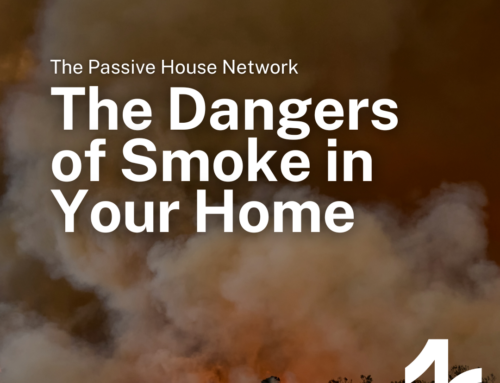Ventilation Unit Test Data: A New Report
As our climate emergency bears down, the importance of ventilation data and performance only rises. Passive House practitioners have been frustrated by the lack of shared understanding that appears to exist between Passive House generated protocols and data, and American generated protocols and data, and the institutions that provide them.
We need to be able to connect the dots – from unit performance to whole-building performance, to resiliency, and climate action. We need to see the same data and agree on its definition. We need data that is comparable.
Consequently, NAPHN, working with our Home Ventilating Institute (HVI) and Passive House Institute (PHI) friends, have set out to take steps to build conversation, share common terminology and hopefully provide greater clarity and shared understanding, in the pursuit of growing high-performance building and Passive House markets.
The NAPHN symposium on ventilation is March 10, and will try to demystify the PHI approach, the targets, the where, what, and why of it all – and give an opportunity for American colleagues and audience members to ask questions, discuss, and in the process become more familiar.
In support of this discussion, NAPHN also commissioned a report “Comparison of H/ERV Certification Standards” by Peel Passive House Consulting. The goal of the report, as it notes:
“…is to identify what additional testing, if any, is required for Non-PHI certified equipment to produce the data necessary for Passive House ventilation component certification. This is meant to aid industry stakeholders (test labs, manufacturers, HVI, Passive House practitioners, policy makers etc) in establishing the necessary processes to facilitate this additional testing in North American accredited laboratories….A byproduct of this process is that manufacturers who don’t quite meet all of the rigorous certification requirements would still obtain the performance data that Passive House practitioners require. In this way, Passive House Consultants can reliably and accurately assess the suitability of non-PHI certified H/ERVs for their projects.”
NAPHN believes this focus on building ventilation performance is an opportunity for the ventilation industry around the world and in the US. If component testing outputs can provide Passive House modeling data inputs, and products can meet Passive House targets, there is an emerging high-performance global market that can be served to the benefit of everyone.
We hope you find this report useful and look forward to seeing you at the symposium March 10. Find out more and register here.




